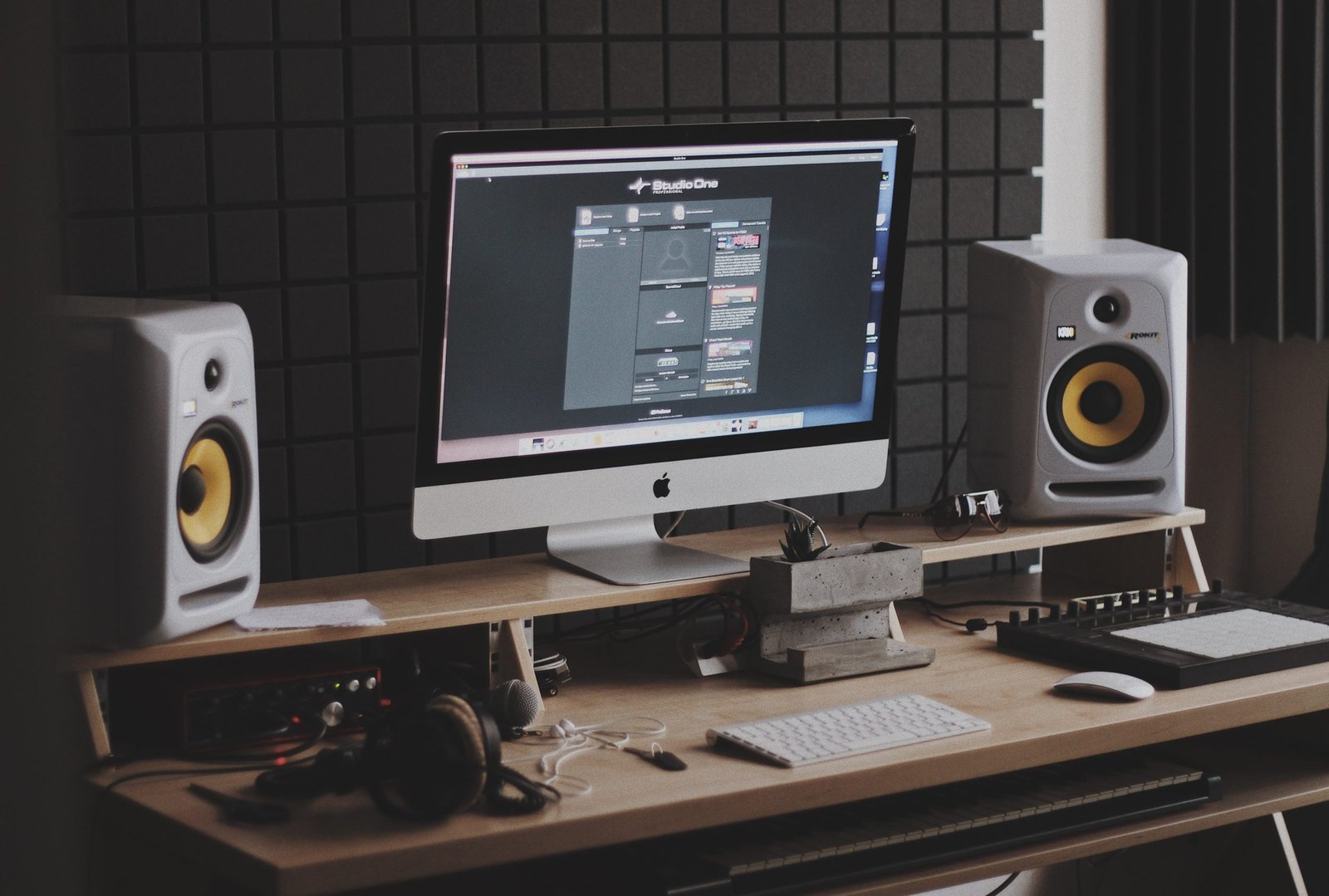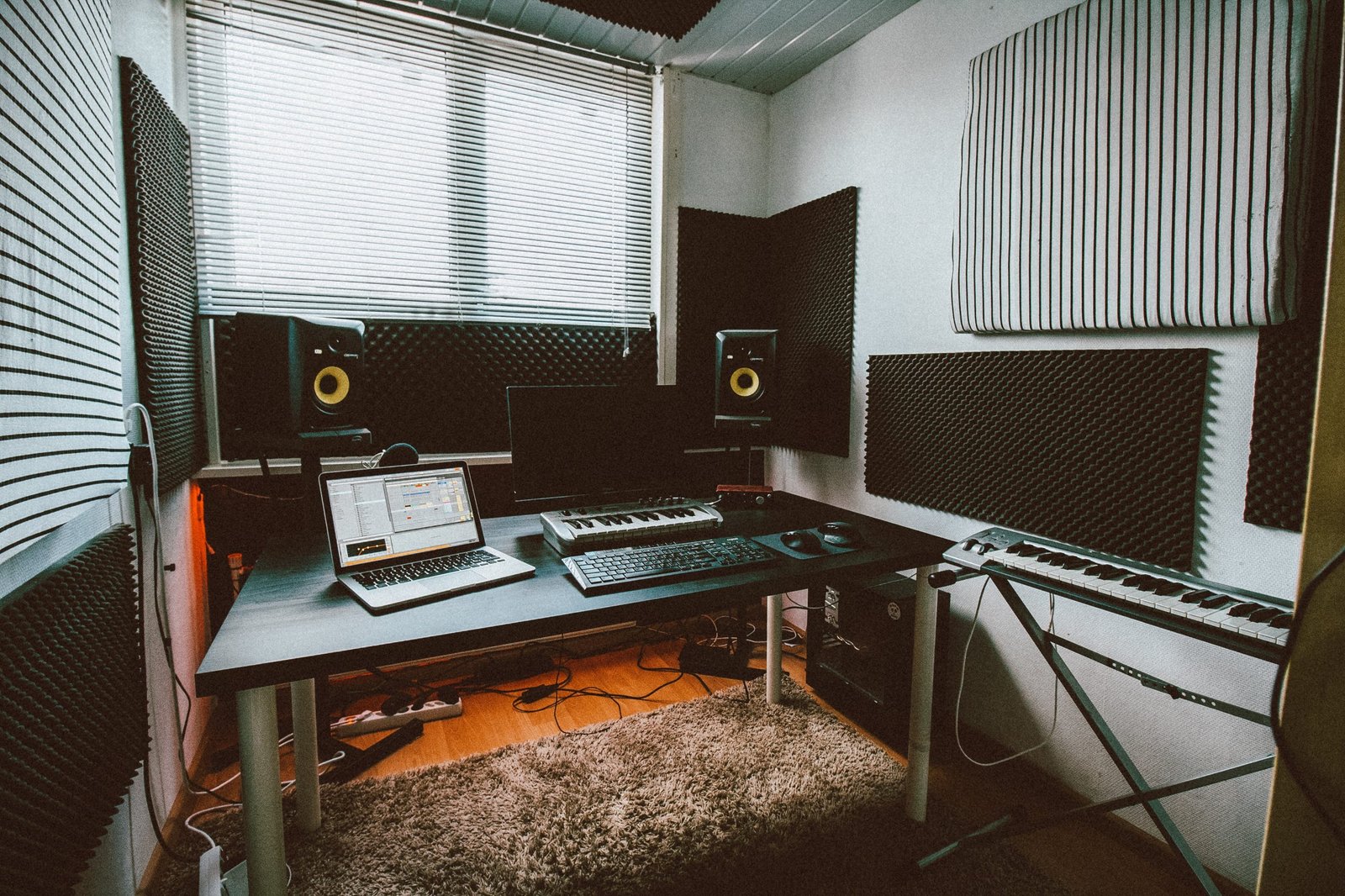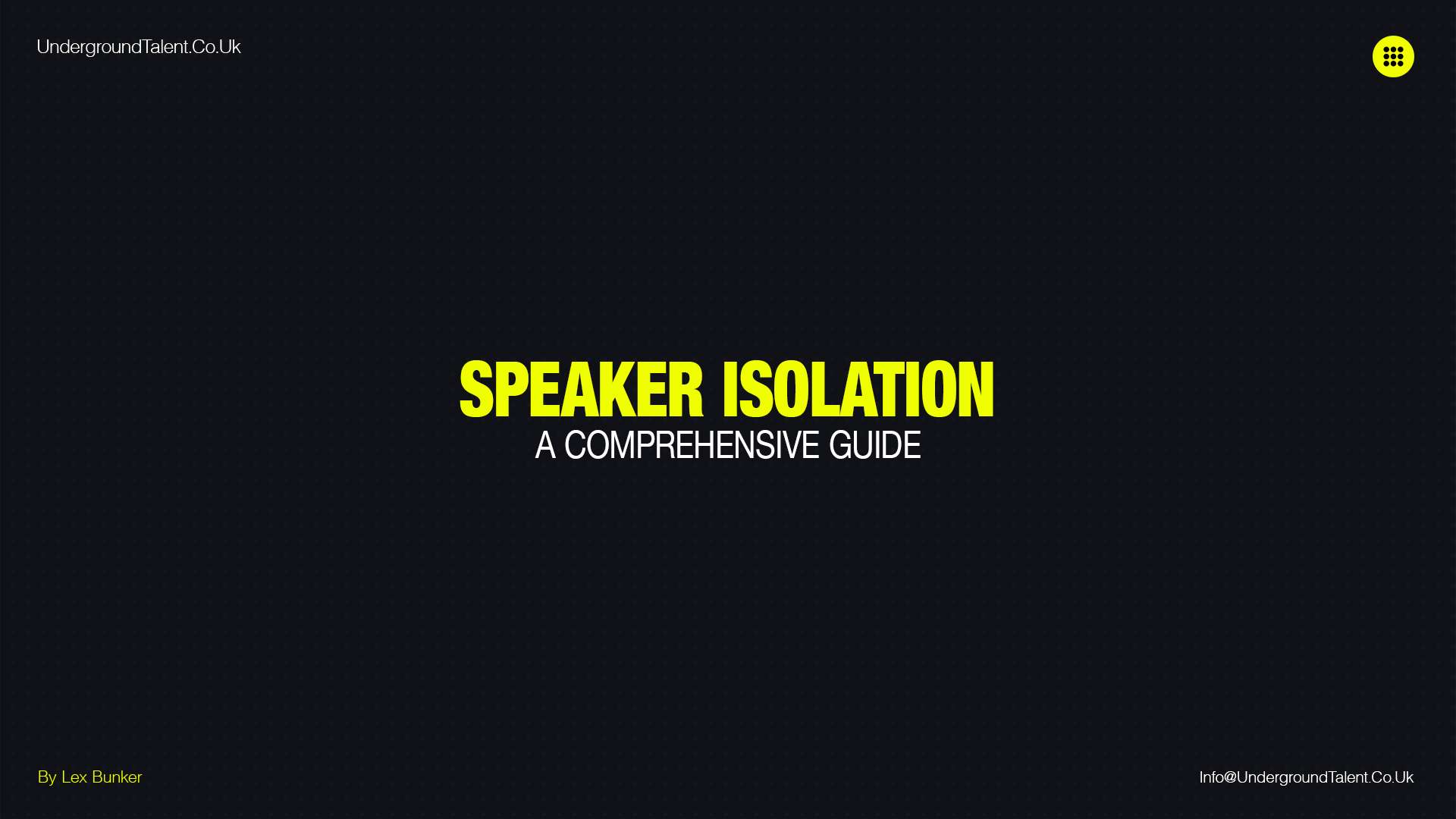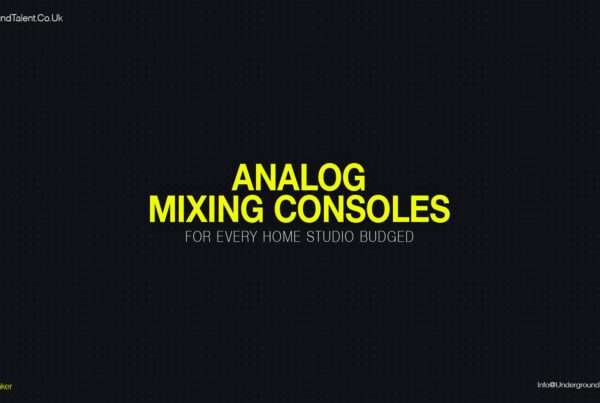Introduction to Speaker Isolation
Why Use Speaker Isolation Pads?
How Speaker Vibrations Impact Sound Quality
Speaker vibrations can disrupt sound quality significantly. When speakers play music, they generate vibrations that travel through whatever they’re placed on. These vibrations can cause ripples of distortion in the audio you hear, especially in the lower frequencies. This muddies the sound, making it difficult to hear fine details. Using isolation pads helps keep these vibrations from affecting playback, leading to clearer and more accurate sound. This is essential for both audiophiles and professional sound engineers who strive for perfect audio reproduction.
The Science Behind Isolation Pads
Isolation pads work on a simple scientific principle: damping. By placing a damping material like high-density foam under your speakers, you effectively absorb and dissipate vibrations. This prevents them from passing into the desk or floor, which can amplify unwanted resonances. The foam’s structure compresses under weight, converting vibrational energy into heat, subtly but significantly cleaning up audio output. This scientific approach ensures minimal distortion, making isolation pads a must-have for achieving the truest sound in any listening environment.
Comparing Audio Setups: With and Without Isolation
Audio setups without isolation enhancements often suffer from sound colouration due to vibrations. Without isolation, speakers transmit energy directly to surfaces they rest on, which can resonate and add unwanted tones to music, particularly at high volumes. In contrast, setups with speaker isolation pads show a marked improvement in sound clarity. The pads eliminate the extra resonances, allowing only the speakers’ true output to be heard. This makes a substantial difference in environments where acoustic purity is critical, like recording studios and home theatres.
 Image by Oleg Ivanov
Image by Oleg Ivanov
Types of Speaker Isolation Pads
High-Density Foam Pads
High-density foam pads are essential for reducing vibrations in audio setups. These pads are made from dense foam that absorbs vibrations effectively, preventing them from transferring to the surface below. This isolation improves sound clarity by minimizing unwanted noise and resonance. When selecting foam pads, consider their density and weight capacity to ensure they can support your speakers without compressing too much. Typically, these are used under studio monitors in home studios or professional settings. The main advantages include ease of installation and immediate improvement in sound quality. However, they often lack height adjustment, limiting their versatility in setup customization.
Isolation Stands
Isolation stands to differ from foam pads by elevating speakers off the ground or desk, which reduces direct surface contact. These stands often feature adjustable tilt and height settings, allowing users to direct sound precisely where needed, optimizing the listening experience. The benefits of using stands include enhanced stereo imaging and less vibration transmission through other structures. However, the drawbacks include higher costs and larger physical footprints, which may not suit smaller spaces. Stands are ideal for audiophiles and professional studios looking to maximize their audio quality.
Isolation Cones and Spikes
Isolation cones and spikes serve to decouple speakers from their resting surfaces by minimizing contact points. This significantly reduces the transmission of vibrational energy, enhancing sound clarity. Cones and spikes are particularly effective on carpeted floors or uneven surfaces where traditional pads may not perform well. They are best used in high-end audio setups where precision is key. While effective, improper installation of cones and spikes can lead to increased resonance if not aligned correctly, potentially harming audio output. They offer a reliable solution for those seeking the ultimate in sound isolation and fidelity.
Choosing the Right Isolation Solution for Your Studio
 Image By Ak n Cakiner
Image By Ak n Cakiner
Assessing Room Acoustics
Optimal sound quality begins with understanding your room’s acoustics. Hard-surfaced rooms excel with high-density foam pads, reducing sound wave reflection and transmission. For carpeted areas, consider spikes that stabilize speakers by penetrating the carpet, enhancing audio clarity.
Understanding Speaker Requirements
The type of speakers you own impacts your choice of isolation. Large, heavy speakers benefit from robust isolation stands, which support more weight and curb vibrations effectively. Lighter bookshelf speakers are well-matched with foam pads, adept at dampening subtle vibrations.
Personal Preference and Spatial Considerations
Your choice should also reflect personal style and space availability. Isolation stands might be too cumbersome for tight spaces, where foam pads and spikes could be more practical. Both offer a streamlined solution without sacrificing performance.
Making the Right Choice
When deciding between foam pads, stands, or spikes, evaluate how each aligns with your studio’s specific needs. Choose an option that harmonizes with your room’s characteristics and speaker type, ensuring precise and accurate sound reproduction.
Installation Tips
Proper installation of speaker isolation solutions can greatly enhance your audio experience. Here’s a step-by-step guide and some tips to ensure you get the most out of your isolation pads or stands:
- Identify the Right Location:
- Place your speakers where they will likely remain as moving them often can affect the setup’s integrity.
- Choose the Appropriate Isolation Method:
- Select foam pads, stands, or spikes based on your speaker type and the acoustics of your room.
- Prepare the Surface:
- Ensure the surface under your speakers is clean and stable. Remove any dust or debris that might undermine the isolation.
- Install the Isolation Device:
- For foam pads:
- Position the pads directly under each speaker. Ensure the speaker sits centrally on each pad to balance the weight evenly.
- For stands:
- Assemble the stand according to the manufacturer’s instructions. Adjust the height and tilt to direct sound towards your listening position.
- For spikes:
- Attach the spikes at the corners of your speakers. Carefully balance them to prevent wobbling which can introduce vibrations.
- For foam pads:
- Test and Adjust:
- Play a familiar track and listen to the sound. Adjust the speaker positions or isolation device settings if needed to optimize the audio quality.
- Regular Maintenance:
- Check and clean your isolation devices regularly to maintain their effectiveness. Dust and slight shifts can alter performance over time.
Tips for Maximizing Effectiveness with Speaker Isolation
Implementing these tips will help secure the best possible sound from your speakers by effectively minimizing unwanted vibrations and reflections.
- Levelling: Ensure all isolation devices are perfectly level to prevent uneven weight distribution and potential sound distortion.
- Avoid Direct Wall Contact: Keep speakers at least a few inches from walls to reduce reflections and ensure clear sound propagation.
- Symmetry: Symmetrically align speakers to your listening position to enhance the stereo image and improve the overall sound field.
Conclusion to Speaker Isolation
Using speaker isolation pads significantly enhances the quality of audio playback and recording by minimizing vibrations and ensuring sound clarity. These pads are vital in both professional and home studio settings for accurate sound reproduction. Investing in proper studio equipment like isolation pads can transform your audio experience, providing cleaner sound and more precise mixing capabilities.
We encourage all audio enthusiasts and professionals to assess their studio’s specific needs and choose isolation solutions that best fit their setup. Whether you’re setting up a new home studio or looking to upgrade your current equipment, consider the clear benefits of adding high-quality speaker isolation pads to your audio arsenal.
Additional Resources
- Best Speaker Isolation Pads for Home Studio
- Speaker Isolation Pads: 15 FAQs You Should Know
- Room Acoustics: How to Setup Your Room?
- Myths About Room Acoustics Explained
- Room Acoustics: Understanding Sound Waves and Reflections
FAQs on Speaker Isolation
Are speaker isolation pads necessary for home studios?
Yes, speaker isolation pads are essential for home studios. They prevent vibrations from muddying your mixes by minimizing the transfer of sound to surfaces like desks and floors. This is crucial for accurate sound monitoring and recording.
Can I use books or other household items as makeshift isolation pads?
While books and other household items can provide temporary relief from vibrations, they are not designed to absorb sound efficiently. Investing in dedicated isolation pads, specifically engineered to reduce vibration and enhance sound quality, is recommended for optimal results.
What are the signs that I need better isolation for my speakers?
Signs you need better isolation include noticeable buzzing or rattling sounds during playback, inconsistent or undefined bass frequencies, and poor sound clarity. These issues often arise from vibrations transferring through non-isolated surfaces.
Producing Techno? Get Your Free Sample Packs.
Dive into electronic music production with our newly released “Free Techno Tools V1” and “Free Techno Tools V2” sample packs. These packs are full of high quality sounds that will add a professional touch to your tracks. If you’re looking to expand your sound library, these free sample packs are perfect for every techno enthusiast. Click on the links below to access these fantastic resources and elevate your production game today!
Enhance Your Productions
Discover more ways to improve your sound:
- Loops: Improve Your Sound Quality Using Sample Packs
- Dexed: Free FM Synth VST by Digital Suburban
- How to Install VST Plugins on Your Computer Successfully
More Techno? Connect With Us.
Join our vibrant community for more wisdom and updates:
And Always Remember…
Have Fun & Be Creative!





